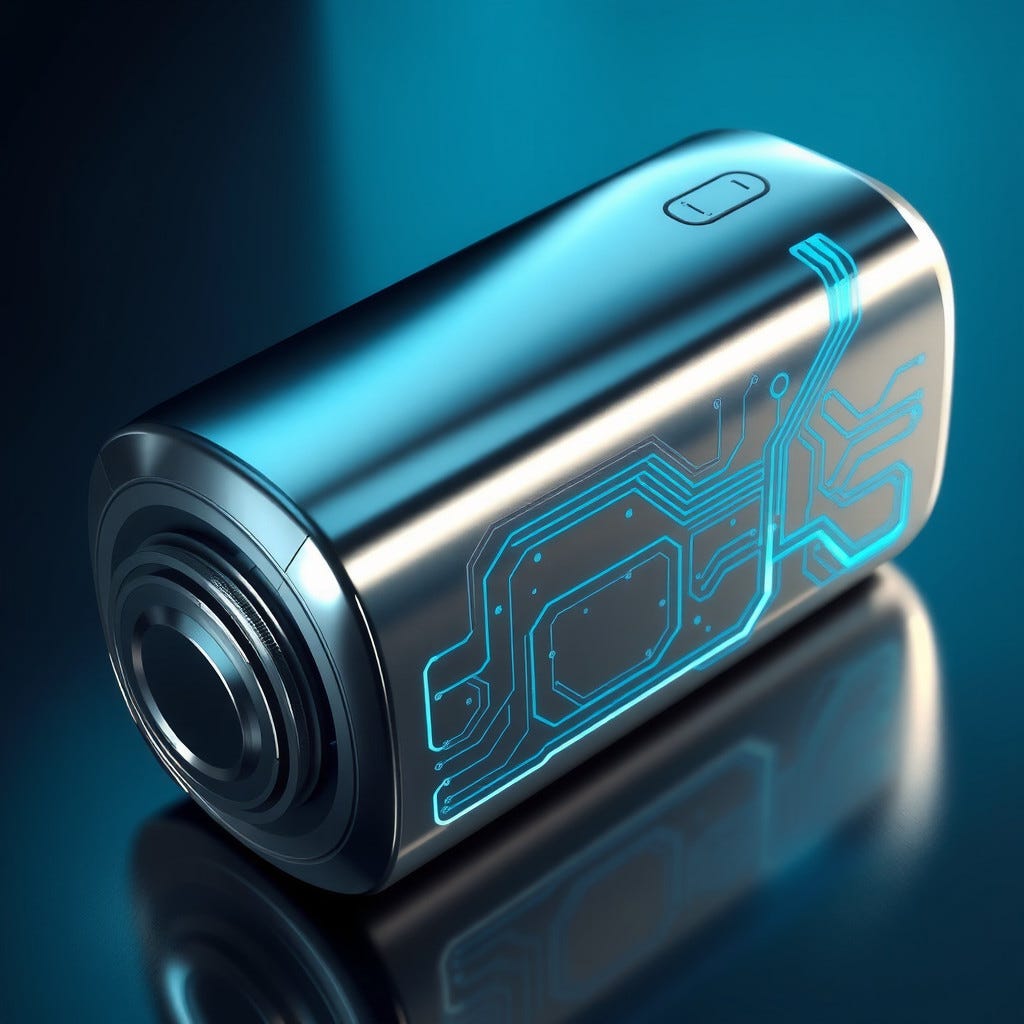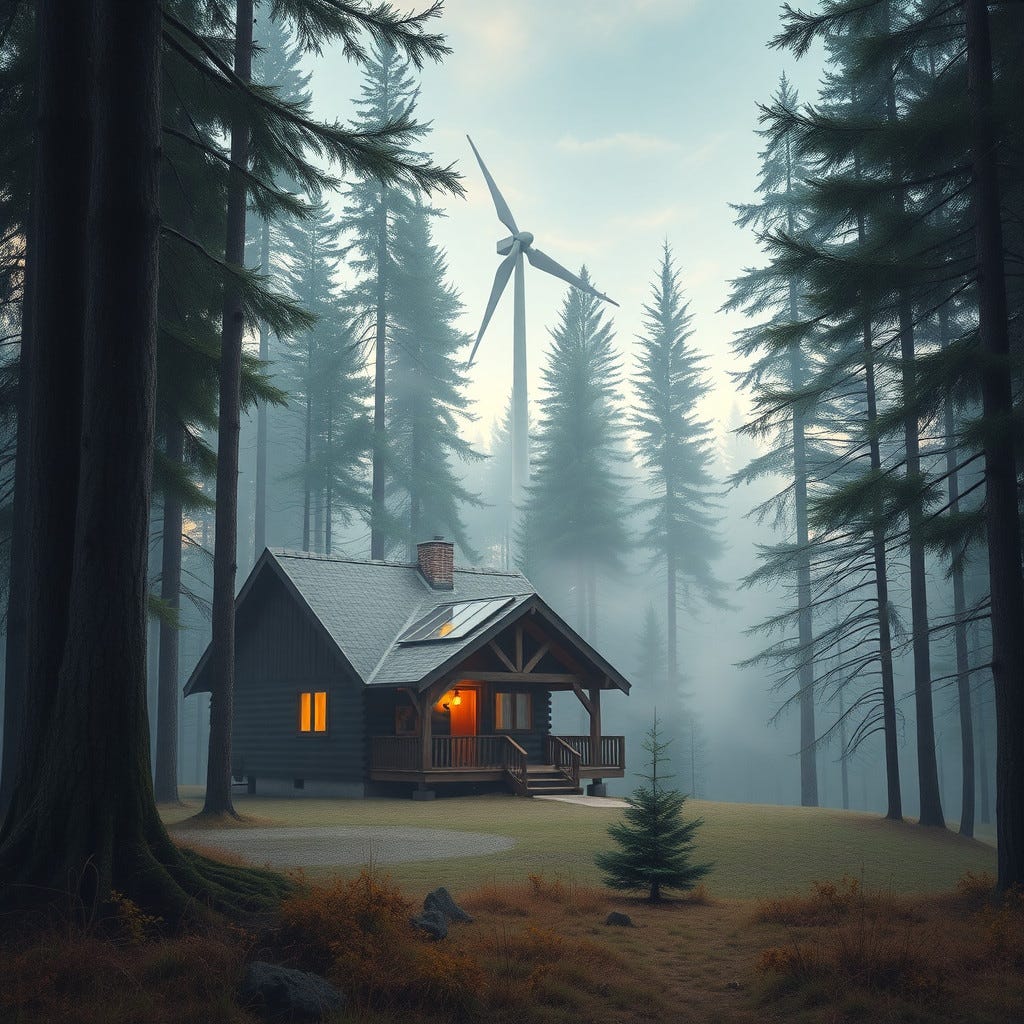Innovations in Renewable Energy: What’s Next?
No matter what your living circumstances are, I believe we all desire climate-friendly renewable energy sources to be accessible as soon as possible. Whether you have the perspective that it may be too late to help rebalance the climate or not, I think some of the latest innovations are a positive route forward.
A couple of the recent advancements:
Green Hydrogen Production
What are Hydrogen Batteries?
Hydrogen batteries, or hydrogen fuel cells, generate electricity by combining hydrogen with oxygen. The only byproducts are water and heat, making them a clean energy source.
Advantages:
Clean Energy: Produces no greenhouse gases when using renewable hydrogen.
High Efficiency: Can convert chemical energy directly into electrical energy with high efficiency.
Versatility: Can be used in various applications, including transportation, stationary power, and industrial processes.
Types of Hydrogen Production:
Green Hydrogen: Produced using renewable energy sources through electrolysis of water.
Blue Hydrogen: Produced from natural gas with carbon capture and storage to reduce emissions.
Grey Hydrogen: Produced from natural gas without carbon capture, resulting in higher emissions.
Current Applications:
Transportation: Hydrogen fuel cells are used in cars, buses, and even ships.
Stationary Power: Used in backup power systems and grid support.
Industrial Processes: Can replace fossil fuels in high-heat industrial processes.
Future Potential:
Hydrogen is seen as a key player in the transition to a clean energy future. It can help decarbonize sectors that are hard to electrify, such as heavy industry and long-haul transport.
Toyota and their subsidiary Woven Planet. They recently unveiled portable hydrogen cartridges at the Japan Mobility Show Bizweek 2024. These cartridges are designed to provide swappable power for hydrogen fuel cell electric vehicles (FCEVs).
Key Features:
Portable and Swappable: The cartridges are compact and light enough to be carried by hand, similar to oversized AA batteries. When the hydrogen runs low, you can simply swap out the cartridge for a new one.
Versatile Use: Besides powering vehicles, these cartridges can also be used to generate electricity for homes or even for cooking.
Reduced Size and Weight: Toyota has significantly reduced the size and weight of the hydrogen tanks, making them more practical for everyday use.
This innovation aims to make hydrogen energy more accessible and convenient, potentially reducing the need for extensive charging infrastructure.
Tidal Stream Energy
The MeyGen Project is a pioneering tidal stream energy project located in the Pentland Firth, between the Island of Stroma and the Scottish mainland. It's the world's largest planned tidal stream project and aims to demonstrate the commercial viability of tidal energy.
Key Highlights:
Location: The project is situated in one of the fastest-flowing tidal areas in the UK, making it an ideal spot for harnessing tidal energy.
Phase 1: The first phase includes four 1.5 MW turbines, which have been operational since 2018. These turbines have generated over 51 GWh of renewable electricity, enough to power approximately 6,000 homes.
Future Plans: The project has consent for up to 86 MW, with plans to expand to 398 MW. This expansion will significantly increase the amount of renewable energy generated.
The MeyGen Project showcases how tidal energy can be harnessed on a commercial scale, providing a reliable and sustainable source of power. It's an exciting step forward in the quest for clean energy solutions!
Interesting don’t you think?
However, I often wonder what Carbon Footprint these projects have and possible impacts on the ecosystem e.g. displacement of aquatic life by installing Tidal Stream Turbines. Just a thought!
Top 5 Countries People Choose to Go Off-Grid?
While there isn't a definitive ranking of countries for off-grid living, several nations are popular among those seeking this lifestyle. Here are five countries often chosen for off-grid living and the reasons why:
1. Canada
Canada is a top choice for off-grid living due to its vast wilderness and abundance of natural resources. Key factors include:
Extensive undeveloped land, particularly in provinces like British Columbia and Yukon
Abundant freshwater sources
Lenient regulations in some areas regarding off-grid structures
Rich wildlife and opportunities for hunting and fishing
Beautiful, diverse landscapes ranging from forests to mountains
2. New Zealand
New Zealand attracts off-grid enthusiasts for several reasons:
Stunning natural beauty and diverse ecosystems
Relatively mild climate in many regions
Strong emphasis on environmental conservation
Supportive government policies for sustainable living
Ample renewable energy potential, including geothermal and solar
3. Costa Rica
This Central American country is popular for off-grid living due to:
Year-round warm climate suitable for growing food
Abundant rainfall and freshwater sources
Government support for environmental initiatives
Lower cost of living compared to many Western countries
Rich biodiversity and opportunities for sustainable agriculture
4. Sweden
Sweden offers attractive options for off-grid living:
Extensive forests and undeveloped land
Progressive environmental policies
High potential for renewable energy, especially wind and hydroelectric
"Allemansrätten" or "right to roam" laws allowing access to nature
Strong tradition of self-sufficiency and outdoor living
5. Australia
Australia's vast outback and diverse landscapes make it appealing for off-grid living:
Enormous tracts of undeveloped land
High solar energy potential in many regions
Strong tradition of "bush living" and self-reliance
Varied climates suitable for different lifestyles and agricultural practices
Relatively relaxed regulations in some areas regarding off-grid structures
These countries offer a combination of natural resources, supportive policies, and cultural factors that make them attractive to those seeking an off-grid lifestyle. However, it's important to note that regulations, climate, and local conditions can vary significantly within each country, and thorough research is essential before making such a significant life change.
At the end of the day, going Off-Grid can be done in any location, pretty much, with the right amount of planning and skills.
Don’t let it put you off! Remember an estimated 1.7 billion people are living Off-Grid Worldwide and probably many millions are making the move in some way. In the USA a survey carried out a couple of years ago saw that at least 10% of American adults are considering this change of lifestyle!
Some People Who Have Already Successfully Become Off-Gridders
Sandrine Coosemans - Off-Grid Spain
LongTimeMother - Off-Grid Australia
Richard Proenneke was an American naturalist, conservationist, writer, and wildlife photographer who lived alone in the Alaskan wilderness for nearly 30 years, from 1968 to 1998. His off-grid lifestyle and self-reliance have inspired many and provided valuable insights into sustainable living and wilderness conservation.
The Cabin and Off-Grid Living
Proenneke built his own log cabin near Twin Lakes in what is now Lake Clark National Park, Alaska. Key aspects of his off-grid life included:
Constructing the cabin by hand using only local materials and simple tools
Creating his own furniture, utensils, and other necessities
Growing vegetables, hunting, fishing, and foraging for food
Collecting firewood, water, and ice for daily needs
Maintaining his cabin and tools with minimal outside resources
Daily Life and Activities
Proenneke's days were filled with various activities:
Observing and documenting local wildlife and weather patterns
Hiking, skiing, and canoeing to explore the surrounding wilderness
Reading, writing in his journal, and playing the flute
Filming his experiences with a 16mm camera
Hosting occasional visitors and maintaining connections with the outside world
Legacy and Impact
Proenneke's life has left a lasting impact:
His cabin was added to the National Register of Historic Places in 2007
His journals and films have been used to create books and documentaries, including "Alone in the Wilderness"
He inspired many to pursue simpler, more sustainable lifestyles
His observations provided valuable data on the local ecosystem and climate
Philosophy and Approach
Proenneke's lifestyle embodied several key principles:
Self-reliance and resourcefulness
A deep respect for nature and wildlife
Minimalism and living with only essential possessions
Continuous learning and adaptation to the environment
Richard Proenneke's story continues to captivate those interested in off-grid living, wilderness conservation, and the pursuit of a simpler, more connected life with nature.
If you are ready to tell YOUR success story, drop me a line below:
PLEASE SHARE THIS NEWSLETTER FAR AND WIDE,
I intend to keep the subscription fully FREE for as long as possible!
Dominus Owen Markham - Your Man in a Cave in Rural Spain
Join me as a supporter and member with a real-life couple off-grid in Sweden:











